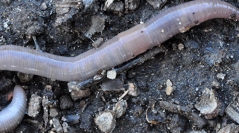

 European Journal of Taxonomy
2020 (701) - Pages 1-22
European Journal of Taxonomy
2020 (701) - Pages 1-22The area comprising the Pyrenees, Northeast Spain, Southern France and Corsica-Sardinia supports a large part of the diversity of Lumbricidae earthworms, including most species of the endemic genera Prosellodrilus, Cataladrilus and Scherotheca. In this region, the probability of encountering new species for science is significant, especially in scarcely sampled localities. In this study, we describe two unidentified species recently collected in the Hyères Archipelago (France), which we assigned to the genera Cataladrilus and Scherotheca based on morphological characters and molecular phylogenetic analyses. Other species of Scherotheca from Montpellier (including the type species of the genus, Sc. gigas gigas) were included in the analysis to clarify their conflicting systematics. A reduced molecular marker set (COI, 16S, 28S and ND1) proved as successful as larger marker sets for identifying phylogenetic relationships within the Lumbricidae. Remarkable disjunctions between both Cataladrilus porquerollensis Marchán & Decäens sp. nov., Scherotheca portcrosana Marchán & Decäens sp. nov. and their most closely related relatives, suggesting a strong influence of paleogeographic events on the earthworm fauna of the area and a possible role of near-shore islands as refugia for relict taxa. Genetic distances and branch lengths supported the elevation of some subspecies of Scherotheca to specific status as well as the retention of other subspecies, highlighting the importance of testing for such delimitation with molecular methods.